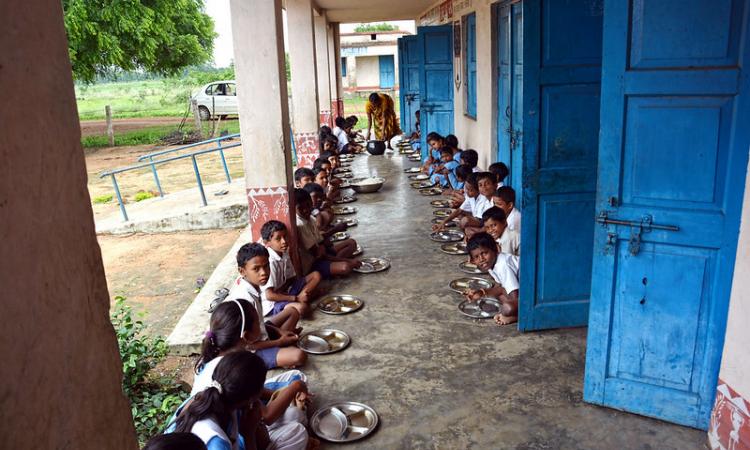
To help rural India achieve SDGs, Cabinet approves Rashtriya Gram Swaraj Abhiyan
The Union Cabinet has approved revamping the Rashtriya Gram Swaraj Abhiyan to help rural India achieve key targets of UN Sustainable Development Goals (SDGs).
In order to develop the governance capabilities of Panchayati Raj institutions, this scheme worth Rs 5,911 crores aims to empower 2,78,000 Panchayati Raj institutions or elected rural local governments to implement a set of social goals that the UN has deemed essential for sustainable development.
As a part of the overall financial outlay of Rs 5,911 crores, the central government will contribute Rs 3700 crore, while the states’ share will be Rs 2,211 crore. There will be nine specific areas of focus in the scheme, including poverty-free villages and enhanced livelihoods in villages; healthy, child-friendly villages; clean and green villages; self-sufficient infrastructure in villages; and villages with good governance and engendered development. (Hindustan Times)
Finally, the Center forms the National Dam Safety Authority
Three months after passing the Dam Safety Act 2021, the Ministry of Jal Shakti has finally established the National Dam Safety Authority (NDSA). The authority that will be headed by the Member of the Central Water Commission (Design & Research) will provide policy implementation and technical assistance to the state bodies.
Parliament passed the Dam Safety Act 2021 in December 2021, which provides for surveillance, inspection, operation, and maintenance of certain specified dams across the country with the penalty of imprisonment up to two years or a fine, or both, if an offense is committed. An upcoming Supreme Court hearing related to the safety of Mullaperiyar Dam has prompted the move. The apex court wanted to disband the supervisory committee that it had appointed for the safety of Mullaperiyar dam, but the government persuaded it to continue until the National Dam Safety Authority (NDSA) was in place. (Business Standard)
TN Water Resources Department to widen Adyar river
For the first time in the history of the State Water Resources Department (WRD), private land would be acquired to widen a river. As a flood mitigation measure, the WRD has decided to acquire 20.5 acres between Thiruneermalai and Anagaputhur in order to widen the Adyar River in southern Chennai.
The state government has allocated more than 70 crores for the project, of which 50 percent will be used to compensate landowners, and the rest will be used to implement flood mitigation measures, such as strengthening bunds and raising walls.
A total of 4,500 encroachments have been removed from the Adyar river so far, and steps are being taken to evict 5,000 more. (The New Indian Express)
Tribal families around the Yettinahole water project live in constant fear
A landslip occurred recently at Habbanahalli village in Karnataka's Hassan district, damaging pipelines and tunnels for the Yettinahole water project. Karnataka Neeravari Nigam Limited (KNNL) plans to build the diversion project for drinking water supply and is aiming to fill up 725 tanks in five districts with 24 thousand million cubic feet of water from the Western Ghats at Yettinahole. The collapse has created a humanitarian crisis as many tribal families reside near an unstable region and fear losing their homes and livelihoods.
Kishore Kumar, an activist, claims there hasn't been a single public hearing for the project that is worth so much of money. Moreover, as many as 43 Gram Panchayats in Belthangady, Uppinangady and Shirady have passed a resolution to deny permission to laying of pipeline or any other civil works connected to the project. (Down to Earth)
Mula Mutha riverfront development project: Activists urge scrapping
Nearly 20 environmental groups and civic activists from Pune have called on the state environment department to scrap the Mula Mutha riverfront development project due to the harm it will cause.
According to the activists, the project will raise flood waters in the city by around 17 feet, and it may lead to the demolition of four bridges, which will result in more traffic. In addition, the project report makes no mention of climate change and many facts and figures in the DPR are incorrect.
Activists also claimed that the authorities have been informed of these issues, but there has been no response from them. Meanwhile, a senior official from Pune Municipal Corporation informed that several consultations and ecological studies were conducted before beginning the project. (The Times of India)
This is a roundup of important policy matters from April 5 - 18, 2022. Also, read the news this fortnight.
/articles/cabinet-approves-revamping-rashtriya-gram-swaraj-abhiyan